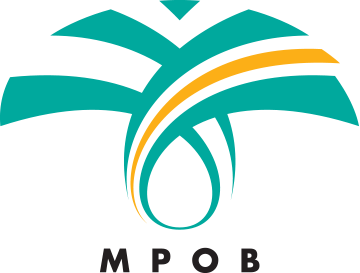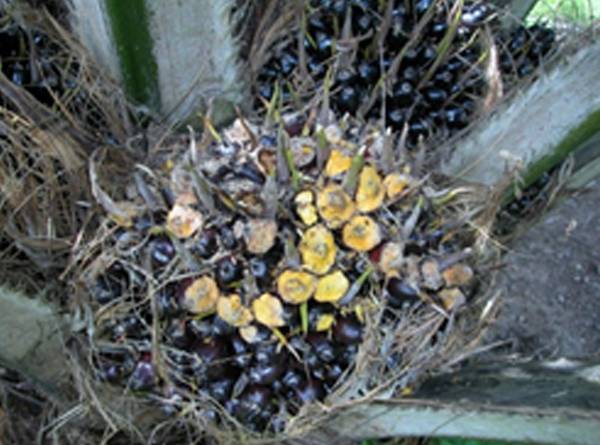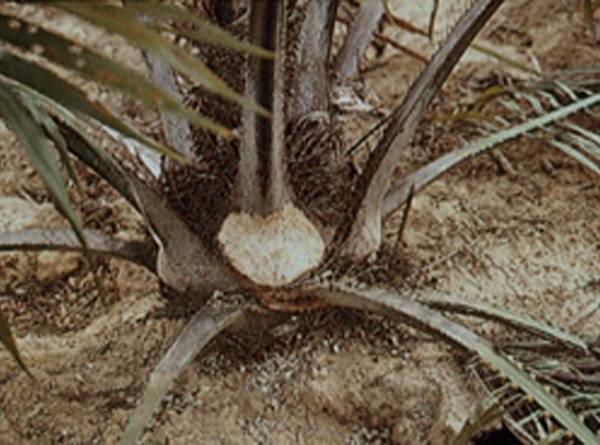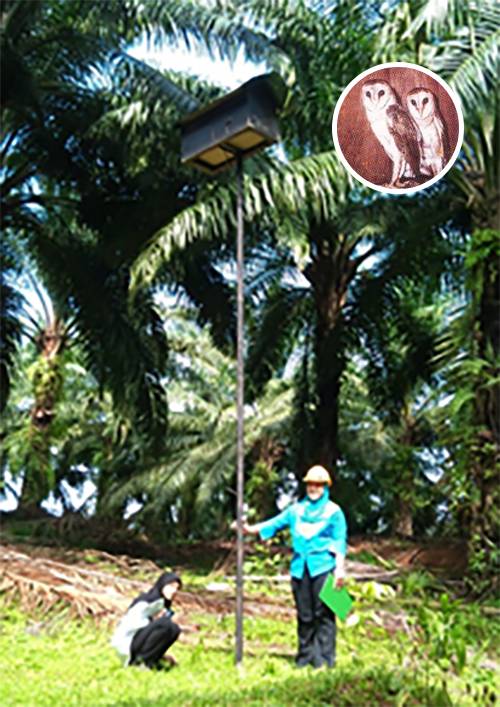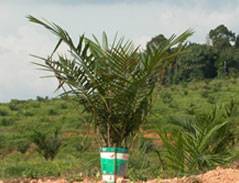Ecology
The main species of rats causing economic damage are:
- Rattus rattus diardii
- Rattus tiomanicus
- Rattus argentiventer
- Rattus muelleri (Sundamys muelleri)
Rat is an omnivorous generalist, yet can be a very selective feeder. They eat both plant and animal matter all year round.
Rat can live on the ground, above ground, and below ground. It does not require forest or substantial vertical structure, and can obtain high abundances on low scrub vegetation area.
Life cycle Stages: Gestation lasts 20-22 days; weaning 21-29 days; sexual maturity is reached in 2-4 months; maximum survival is about 2 years in the wild, but mean survival is usually 1 year or less.
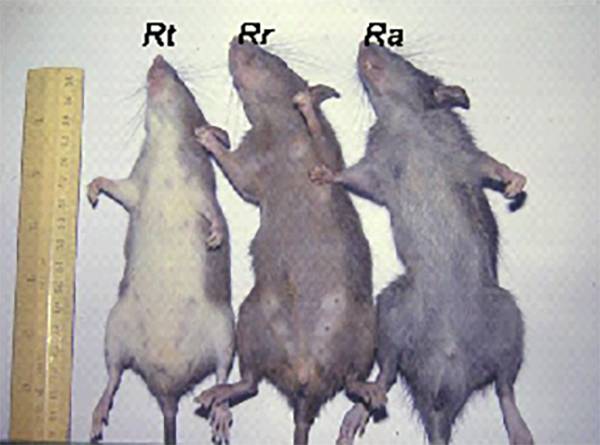
Causal
Sources of food: Oil palm fruit was the food sources and low natural enemies in the field were increase the population of rat. Plant material was found as the dominant food in 17 out of 20 diet studies.
Symptoms
Rats are important vertebrate pests in oil palm plantations on peat. They cause damage in both mature and immature plantings. On mature palms, rats feed on loose fruits and developing fruit bunches. They also attack the inflorescences. Crop losses due to rat damage were estimated at 7-10% if not properly controlled.
For immature palms, rats chew on palm bases and consume the meristematic tissue, killing them in advanced cases. Rats also attack oil palm seedlings in nurseries, causing severe retardation or death to the seedlings.
Control
Using barn owls
Where possible, use of barn owls (Tyto alba) for biological control can be practiced. In the use of barn owls for biological control of rats, nest boxes are provided at 1 unit per 5 to 10 hectares to encourage build-up of the owl population. However, it is unlikely that the owls will keep the rat population under control indefinitely. As such, intervention via baiting will still be necessary from time to time.
Chemical control
The use of chemical agents (rodenticides) to reduce rat populations. Example of frequently used rodenticides: warfarin, chlorophacinone (First generation rodenticides), brodifacoum coumatetralyl and coumatetralyl (second generation rodenticides).
Census and bait – Census for fresh damage exceeds 5% of the total census area requires a full-scale baiting programme. A high acceptance rate indicates a high population density of rats. Baits are to be replaced every 3-5 days until the acceptance rate falls under 20-30%. The baiting programme is to be held for a period of 2-3 months only.
Standard baiting program:
- 1 bait per station (palm or every 9 m apart).
- Check and replenish bait points at every 3-5 days intervals until 20%-30% acceptance rate.
Cultural & Mechanical control
- Cultural – sanitation and farm management.
- Mechanical – placing a barrier
